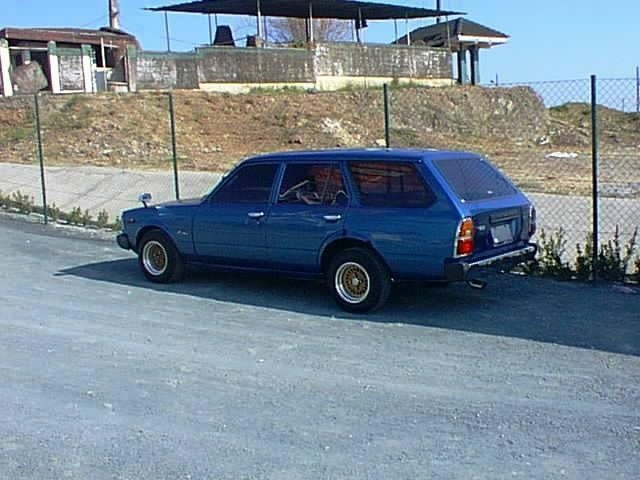

It was also available as the 8R-D, dual SU 8R-B, EFI 8R-E, Californian-spec 8R-C and DOHC 8R-G. The 1.9 L (1,858 cc) 8R The engine was produced from 1968 through 1973.Ĭylinder bore and stroke was 85.9 mm × 80 mm (3.38 in × 3.15 in) with a five bearing crank.

1968–1970 Toyota Corona (RT41 sedan, RT53 hardtop, RT54 hardtop).The 7R was similar in displacement and technology to the 4R except the wider 86 mm (3.39 in) bore and shorter 68.5 mm (2.70 in) stroke of the 7R gave different power characteristics. The 7R-LPG was produced from 1969 through 1970. The 7R-B was produced from 1968 through 1969 with dual SU carburetors and higher compression. The 1.6 L (1,591 cc) 7R was produced from 1968 through 1971 with a twin throat down-draft carburettor. The 6R-B was produced those same years, while the natural gas powered 6R-LPG was produced from 1970 through 1973.

Aug 1981–? Toyota Corona sixth generation (RT131), only LPG combined with automatic transmission.Only with LPG for taxi use in the last two generations. Toyota Crown: third through sixth generation (RS50, RS60/66, RS80/RS100, and RS110).Trucks such as the Dyna received a version tuned for torque, with a maximum power of 59 kW (79 hp 80 PS) at 4600 rpm and torque of 145 N⋅m (107 lb⋅ft) at 3000 rpm. An LPG version, the 5R-LPG, was produced from 1968 through 1983. The 3R-LPG variant was produced for the last five years. The 3R-C was introduced to comply with California emissions laws. In 1960 the 3R was uprated to 8:1 and the 3R-B version was offered from 1960 through 1968 with the old 7.7:1 compression ratio. When introduced it had a 7.7:1 compression ratio. Production had been gradually transferred from the original Honsha plant to the new Toyota Kamigo plant in 1968. It is a square engine, with bore and stroke of 78 mm (3.07 in).Īgain, an LPG version, the 2R-LPG, was produced alongside the gasoline version. Road & Track was unimpressed with the engine on its introduction, noting that it idled quietly but was "not capable of very high revolutions per minute." The R engine was the Toyota engine used in the 1958 Toyota Crown, the first model to be exported to the United States. An LPG version, the R-LPG, was produced for the last two years. Induction was by a twin throat down-draft carburettor, the compression ratio was 8.0:1 and the total weight was 155 kg (342 lb). In common with new engines of the time, it was made from cast iron (both the block and the head), water cooled, used a three bearing crank, 12V electrics and a side-mounted gear-driven camshaft controlling overhead valves via pushrods in a non-cross flow head (exhaust and inlet manifolds being on the same side of the engine). The 1.5 L (1,453 cc) R family was produced from 1953 through 1964, and was originally manufactured at the Toyota Honsha plant.īore and stroke was 77 mm × 78 mm (3.03 in × 3.07 in). History of the R family R 1953 Toyota R engine. Overhead cam (OHC) versions featured a chain-driven camshaft. Designed for longitudinal placement in such vehicles as the Celica and Hilux and in production from 1953 through 1997, usage faded out as many of Toyota's mainstream models moved to front-wheel drive.
TOYOTA CORONA 1976 SERIES
The Toyota R family was a series of inline-four gasoline automobile engines. Modified 18R-G engine in a 1974 Toyota Corona Hardtop


 0 kommentar(er)
0 kommentar(er)
